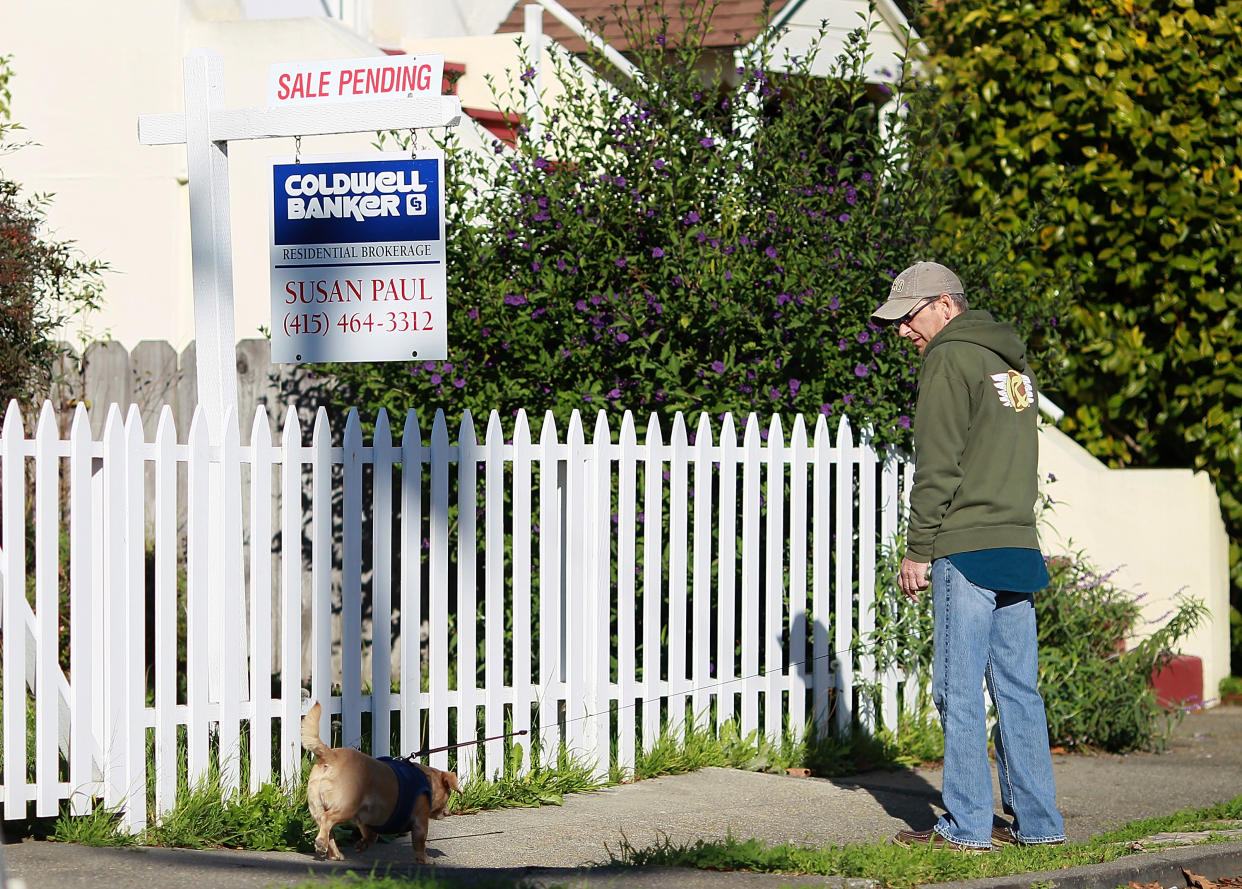Pending home sales pick up in February as buyers gear up for spring
US pending home sales, a measure of contract signings on existing homes, gained momentum in February as some buyers raced ahead of climbing mortgage rates.
After dipping in January, the index for pending home sales rose 1.6% in February, according to data from the National Association of Realtors (NAR) released Thursday. The reading of 75.6 was the lowest for the month since NAR first began tracking the data in 2001. A reading under 100 indicates a weaker pace of pending contracts.
The figure came in above the Bloomberg consensus of a 1.5% increase. Still, year-over-year contract signings were down 7%, the NAR found.
The uptick in the index, an early indicator of the housing market’s health, showed signs that buyers are coming to terms with elevated rates. A modest bump in new listings may have played a role in attracting buyers, as well as a sense of urgency to race against climbing rates.
Keith Gumbinger, vice president of HSH.com has guessed as much.
“Mortgage conditions were only slightly less favorable in February than January,” he said, noting that higher rates may have muted some activity last month. Rates vaulted from 6.63% to 6.94% by the end of February, and continue to linger near 7%.
Challenges in inventory also remain a point of concern going into the spring.
“The primary constraint on home sales transactions has been a lack of inventory,” Lisa Sturtevant, chief economist at Bright MLS, told Yahoo Finance. “We’ve started to see new listing activity start to increase and supply is on the rise. As a result, I believe we’ll see pending sales activity increase in March even if mortgage rates don’t fall significantly.”
Higher-cost regions continue to struggle

Pending home sales, which tend to lead existing home sales by a month or two, are still lagging in the most expensive regions of the country — a theme that may persist this spring.
In the Northeast, pending transactions fell by 0.3% month over month, marking a 9% drop from February 2023 levels. As for the West, contract signings fell 6.5% in February, and were down almost 8% from the previous year.
Lower-priced homes, between $200,000 and $300,000 continued to be scarce in these areas as well, Realtor.com found. In fact, large Western and Northeastern metros reported inventory declines in February of 1% and 4.2%, respectively.
“The high-cost regions in the Northeast and West experienced pullbacks due to affordability challenges,” said Lawrence Yun, chief economist at the NAR. “Home prices are rising faster than income growth. [It’s] not healthy and adds challenges for first-time buyers.”
Southern states post gains in inventory
The South and Northeast painted a different outlook for prospective buyers.
In the South, contract signings climbed 1%, but were down 8.5% from a year ago. Meanwhile, the Midwest recorded more than a 10% jump in pending transactions in February, but activity was 2.5% down from a year ago.
The uptick in activity in both the South and Northeast could be due to rising availability of homes in these regions. According to Realtor.com, the South saw a major uptick in the availability of homes priced between $200,000 and $350,000 in February. Home prices within that range were up over 20% compared to last year.
In Orlando, overall inventory was up more than 38% compared to pre-pandemic years. This was followed by Miami, which registered upticks of 37%, and Tampa, 36%.
Other popular Southern metros included San Antonio, with inventory up more than 27%, Austin (11%), and Dallas ( just over 2%), Realtor.com revealed.
“I do think that inventory is going to continue to be a constraint on the market this spring. But I think conditions are going to loosen up, even as rates remain high,” Sturtevant said. “This spring could be the season of ‘life happens’ for sellers. Changing family or financial situations will prompt more homeowners to list their home, even when the gap between their mortgage rate and the current rate remains wide.”
Gabriella Cruz-Martinez is a personal finance and housing reporter at Yahoo Finance. Follow her on X @__gabriellacruz.
